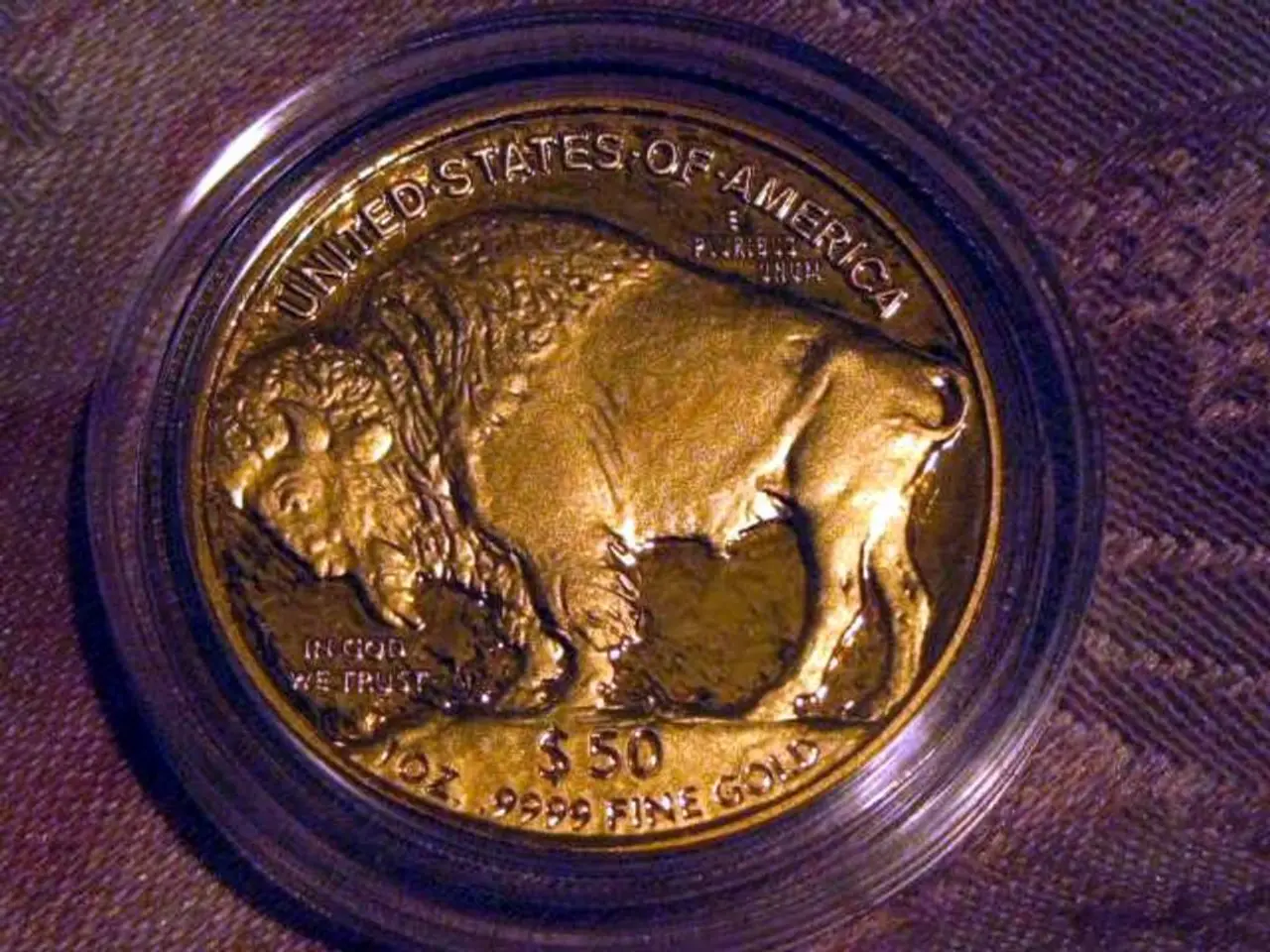Market chaos in gold sector due to increased tariffs and intervention from Federal governor, causing gold prices to escalate
Gold Maintains Safe-Haven Status Despite Tariff Uncertainty
In a surprising turn of events, gold has continued to thrive as a safe-haven asset in 2025, despite the imposition of tariffs on kilo gold bars from Switzerland.
The gold price in New York has surged beyond the London price, creating a record $125/oz discrepancy. This surge was triggered by the decision by America's Customs Border Protection Agency to impose tariffs on gold, which caused turmoil in the gold futures market. The NY market, often used by bullion banks as a hedging tool, has experienced significant volatility, with gold prices reaching an all-time high of $3,534/oz.
However, the London spot price, currently the most reliable gauge of the gold price, has remained relatively stable, trading for as little as $3,396 during this period.
The tariffs on Swiss gold exports have caused a major divergence in the price of gold across New York and London. The jump in the New York gold price has driven a significant imbalance in the physical vs futures markets. This imbalance has been a source of concern for analysts, but the broader macroeconomic factors have kept gold's safe-haven status intact.
Persistent U.S. inflation (core inflation at 3.1% in mid-2025) combined with ambiguous Fed interest rate policies create conditions favoring gold as a hedge against currency devaluation and systemic risk. Central banks globally have accelerated gold purchases, diversifying reserves away from the U.S. dollar amid de-dollarization trends, reflecting confidence in gold's role as a reserve asset.
The tariff impact was initially significant, triggering a price surge. However, clarification from the Trump administration exempting gold bars from tariffs reversed much of that short-term rally-induced volatility. This episode highlights tariff uncertainty but did not diminish gold's fundamental appeal.
Despite minor pullbacks from record highs, gold is still widely regarded as a safe-haven asset amid ongoing geopolitical tensions and economic risks. Analysts expect gold to hold steady or even rise further if economic conditions worsen.
While assets like bitcoin are competing to become safe havens, gold maintains a leading position due to its long-established legacy and central bank support.
In summary, the tariffs on Swiss kilo gold bars introduced some uncertainty and short-term price volatility, but gold’s broad macroeconomic and geopolitical backing continues to reinforce its status as a strategic safe-haven asset in 2025.
The tariffs on Swiss gold exports and the subsequent price volatility in the banking sector have led to increased interest in investing in gold as a hedge against economic uncertainties and potential currency devaluation. On the other hand, the ongoing turmoil in gold markets, especially in the New York market, has opened up opportunities for skilled investors to profit from trading in the finance sector.




